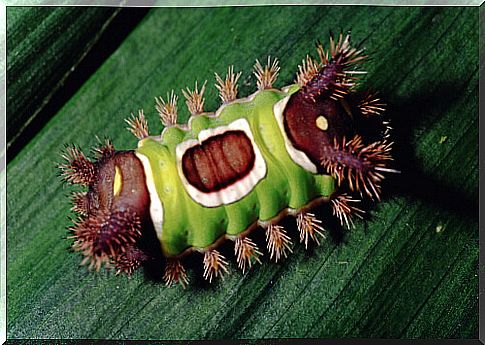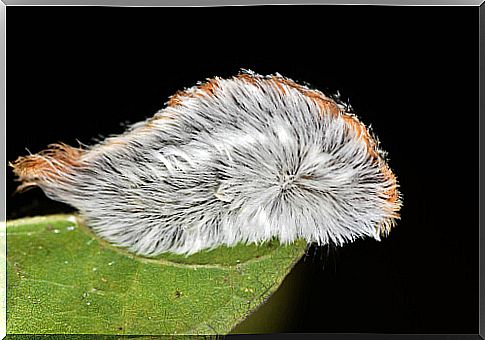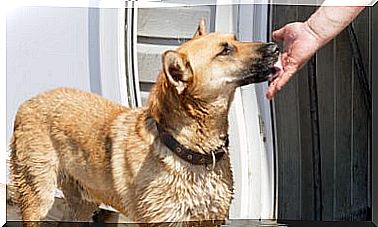Are There Caterpillars That Can Be Dangerous?

Although they seem to be harmless and even vulnerable animals, there are caterpillars that can be dangerous, and a lot! Therefore, you should not proceed to manipulate them without taking into account certain aspects.
Keep in mind that an added risk is that these creatures look absolutely charming. They display various colors, patterns, and textures that help them survive until they pupate and eventually become butterflies or moths.
Defense strategy for caterpillars that can be dangerous
It should be said that caterpillars are very protein-rich and quite defenseless creatures, which makes them a staple for dinner for many other animals. In this context, it is natural that caterpillars have developed various means of protection.
It is common for their markings and body parts to make the caterpillar appear larger or conspicuously dangerous. Many caterpillars possess stinging hairs: hollow bristles that contain toxins that produce poisonous glands. When touched, these structures can break and release the venom.
Additionally, reactions to these toxins range from mild itching to severe pain and, in the case of the giant silkworm moth caterpillar, even death. But pay attention! Before crushing a caterpillar, remember that bites only occur when touched and are threatened.
Saddled caterpillar
The beautiful saddled caterpillar ( Acharia stimulea ) is native to the eastern United States, thriving in warmer climates. Its name comes from the characteristic markings that resemble that the caterpillar wears a bright green saddle with a brown seat.

In addition, it has stinging hairs that line the lower edges of the caterpillar’s body and two fleshy horns at each end. These hairs are laden with venom, and on contact with the skin can cause painful swelling, a rash, and nausea. The rash that can last for days.
Cat caterpillar or stuffed animal
This caterpillar ( Megalopyge opercularis) has an unusual appearance. It has long hairs that are reminiscent of a Persian cat or some other long-haired animal. Thus, it is also known as a stuffed caterpillar, a woolly cat and a chick caterpillar.
Importantly, it is one of the most toxic caterpillars in North America, its “hairs” are actually poisonous spines. To the touch, the poison provokes a strong reaction. Immediately, a rash will appear, followed by extremely severe pain.

Additionally, pain can radiate to other areas connected to the wound site, and other symptoms include burning, swelling, nausea, headache, abdominal pain, blisters, and in severe cases, chest pain, numbness, or shortness of breath. .
The caterpillar of the Io moth
The io moth caterpillar ( Automeris io ) ranked among the 13 most toxic caterpillars in America. Its body is covered with branched green spikes. Each of the hairs ends in a black tip, which releases venom when broken, usually within the predator’s flesh.
Thus, these spines can become embedded, causing irritation beyond the initial bite. This poisoning often requires medical attention. This caterpillar is distributed throughout North America. In addition, they feed on a large variety of plants, including corn, rose, willow, linden, elm, apple, beech, ash, currant, and clover.

Which specimen stands out among the caterpillars that can be dangerous?
Lonomia caterpillars ( Lonomia oblique ), when in contact with the skin, cause an initial local reaction. Thus, the lance-shaped bristles penetrate the skin and deliver a dose of toxin that causes headache, fever, vomiting and general malaise.
Later, 12 to 24 hours later, the affected person presents a hemorrhagic picture characterized by intense fibrinolytic activity, which can even cause death.
Finally, since 1967 accidents by caterpillars of the genus Lonomia and others of the Saturniidae family have been reported in Venezuela, Brazil, Peru, French Guyana, Paraguay and Argentina. In these localities it is considered a killer caterpillar.









